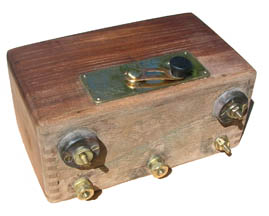Beginner Woodworking Philosophy
We now have a Facebook and YouTube pages to help you on the journey to wood working. And it gives me something useful to do when the shop goes quiet. Here's a link to our YouTube video page. We'll keep adding videos as we get time. Remember always: the best way to get good at something is to do it.

“Yeah, yeah, yeah, patience. How long will that take?”
Beginner woodworking philosophy defaults to patience and perspective. You can always purchase a new table. Or you can devote some time and effort to building one yourself. Ask yourself “Do I just need a table? Or would I prefer to have a table with a personal story attached?”
A purchase is a purchase, nothing wrong with that. For a beginner woodworker, though, the cost is not so much in money as it is time, patience, and perspective. As well as understanding that the TV guys who build a project in half an hour have already done their time.
One of the troubles with woodworking projects is that they typically don’t allow room for a beginner’s learning curve. Once you’ve learned a given technique, you’re done with the project. And when you want to make something useful for your home or shop, you often only need just one or two.
When you’ve completed the piece with the expected beginner detail flaws you then face the question of keeping it or building another one with the experience gained from the first.
We’ve encountered this at West Hills Wood many times and finally developed our beginner woodworking philosophy. A good case in point is our lathe table. The JET mini-lathe needed a platform. So we built a simple A-frame base from scrap 2x4 and plywood then added casters.
When we started turning wood pens as gifts, we suddenly needed a convenient place to store lathe tools, pen supplies, and other related items. So drawers were added to fill in the existing A-frame structure. I’ve gotten pretty good at making square drawers. Trouble is, the A-frame wasn’t as precise as it could be so the drawers don’t fit as tight as they maybe should.
But the fact remains that the drawers are fully functional, they fit in the allotted space, and we don’t want to rebuild the entire piece. We could have done better had we stuck to our
beginner woodworking strategy. But there won't be a next time with this project. So we’ll live with it as is and apply the lessons learned to the next project.
Return from Beginner Woodworking Philosophy to Home
